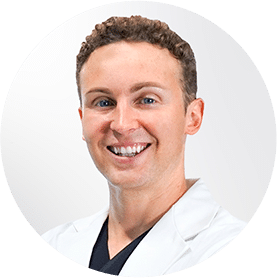Paramus Back Dr Analyzes 5 Types of Back Pain
April 30, 2021
The hard truth, whether we like it or not, is that 80% of us will experience back pain at some stage in our lives. Finding the right medication for back pain, though, can be a frustrating and difficult process for both patients and healthcare providers.
When such a large proportion of the population is prone to suffering from a condition, you can bet an entire economy would spring up claiming to be able to treat the issue. The problem is, most of these treatment methods don’t work due to one issue: they are too generally designed. In fact, the term back pain is merely a symptom definition rather than a diagnosis.

Treating all patients who come in with back pain using the same methods is rarely efficient. A trained pain management specialist can diagnose the condition by determining the particular type of problem you have and tailor a treatment plan that fits your needs and insurance plan. Because it takes a lot of practice to acquire good diagnostic skills, finding a skilled back specialist is critical.
If you are looking for a back Dr near you in Paramus, the trained back physicians at Pain Treatment Specialists are your best bet. We are available for in-person visits, so feel free to contact us. In the meantime, however, let’s take a look at the types of back pain people generally experience, to give you a clearer idea about your condition.

1. Flexion dominant back pain
With some exceptions, the term flexion dominant back pain is used in relation to disc injures. Patients that suffer from flexion dominant back pain experience usually describe the same symptoms, which tend to go as follows:
- Pain in the spine or/and legs
- Tingling and numbness
- Leg weakness
- Sharp pain when coughing or sneezing
- Loss of free motion
- Sitting and bending usually makes the pain worse
- Walking or standing reduces pain
Light exercise, such as directional stretches done at regular intervals during the day, can help preserve your spinal range of motion and relieve discomfort, which makes it a very effective treatment for flexion dominant pain. One of our qualified back doctors will decide the best type of exercise for you, but a passive, repetitive extension of the lumbar spine is a common option.
Your physiotherapist will modify your workout to increase its efficacy after every consultation. Manual therapy can also be used to help restore the spinal range of motion, as well as other types of pain management techniques.
2. Extension dominant back pain
Extension dominant back pain is commonly associated with pain to the joints at the back of the spine. These joints are called the zygapophyseal joints, but they are often referred to as Z-joints. Again, this type of pain comes with some very specific symptoms, making it recognizable. These symptoms include:
- Pain after prolonged standing
- A localized pain in the spine
- In most cases, the range of motion is constant, not shifting over short periods of time.
- Constant back stiffness that does not change
- Pain after high-impact exercises, which put stress on the joints
- Sitting or bending provide temporary relief
Treatment for extension dominant pain usually focuses on reducing the pressure on the spine in extension. A common thing you can notice in people that deal with extension dominant pain is that they often have their low back arched when standing.
Abdominal stabilization exercises and hip mobility stretches, and most particularly hip flexor stretches, can prove very beneficial, as well as using flexed postures on an intermittent basis. To avoid issues in the future, you should focus on training the muscles around the spine and your hip muscles.
3. Neurogenic Claudication
Technically speaking, neurogenic claudication is also a type of extension dominant pain, but it often happens to individuals over the age of 60. This type of pain happens when the nerves are compressed due to walking or standing. In severe conditions, it can limit an individual’s ability to perform long walks.
The most common symptoms linked to neurogenic claudication are:
- Pain when rising and walking
- Weakness in the legs after a certain period of time
- No local spine pain is present
- Bending forward may alleviate pain
- Sitting causes no symptoms and may even alleviate pain
Patients dealing with neurogenic claudication have a low walking tolerance and must take repeated breaks to recover. These individuals can find relief with minimally invasive procedures, as well as physical exercise.
Reducing walking distances may also be recommended for a while. This is one of the instances when pushing yourself too much and attempting to fight through the pain can actually do more harm than good.
To avoid decompression surgery, you need to start building your core as soon as the pain becomes less bothersome. This can build abdominal muscle strength, improving support, and reducing sustained lumbar extension during walking.
4. Inflammatory Back Pain
Inflammatory back pain occurs less often than mechanical back pain but can sometimes be misdiagnosed. This form of pain happens due to severe inflammation in the spinal joints, usually as a result of a medical condition that causes the immune system to attack the spine’s joints.
Ankylosing spondylitis is one example of a condition that causes inflammatory back pain, but there are also others.
It is up to the therapist to properly identify inflammation pain and make sure a trained rheumatologist oversees the treatment, which sometimes includes physical therapy as well.
The most common symptoms of inflammatory back pain include:
- Pain that was not caused by trauma, often happening in individuals under the age of 35
- Pain lasts for more than 12 weeks
- Pain becomes worse during the night and morning, or usually after long periods of inactivity
- Gentle physical activity reduces the pain
- Pain goes away with anti-inflammatory medication
Physiotherapy is rarely useful for back pain caused by inflammation. Doctors usually prescribe medication or minimally invasive procedures to alleviate pain and reduce inflammation.
To get rid of your back pain, book an appointment with one of our back specialists – Dr George Hanna, Dr Laura Lombardi, or Dr Shane Volney. You can find us in Paramus, just off NJ-17, near the Paramus Park Mall and the Garden State Plaza Mall. For more information, we are available for phone general inquiries as well – (855) 874-9670.
Book a Consultation
Scheduling a consultation with one of our pain treatment specialists is one of the best ways to determine the proper solution for pain relief.
Meet Our Team of Back Pain Specialists
All of our Pain Doctors in New Jersey are Harvard Trained and Board Certified in Pain Management

Back Pain Doctor Clifton & West Orange NJ
Dr. George Hanna
Dr. Hanna is a Harvard Trained back specialist in New Jersey and New York. He serves as Medical Director of Pain Management.

Back Pain Doctor Clifton & West Orange NJ
Dr. Laura Lombardi
Dr. Lombardi is a Harvard Trained back pain treatment doctor, currently seeing patients in Clifton and West Orange, New Jersey.

Back Pain Doctor Clifton & West Orange NJ
Dr. Shane Volney
Dr. Volney is a Harvard Trained back treatment doctor seeing patients in the NJ areas of Clifton & West Orange, and in NYC.

Back Pain Doctor Clifton & West Orange NJ
Dr. Michael Nguyen
Dr. Nguyen is Harvard Trained and Board Certified in Pain Management. His pain center accepts major medical insurances and Medicare.

Dr. George Hanna

Dr. Laura Lombardi
Dr. Lombardi is a Harvard Trained back pain treatment doctor, currently seeing patients in Clifton and West Orange, and Paramus New Jersey.

Dr. Shane Volney
Dr. Volney is a Harvard Trained back treatment doctor seeing patients in the NJ areas of Clifton & West Orange, and in NYC.

Dr. Michael Nguyen
Dr. Nguyen is Harvard Trained and Board Certified in Pain Management. His pain center accepts major medical insurances and Medicare.
